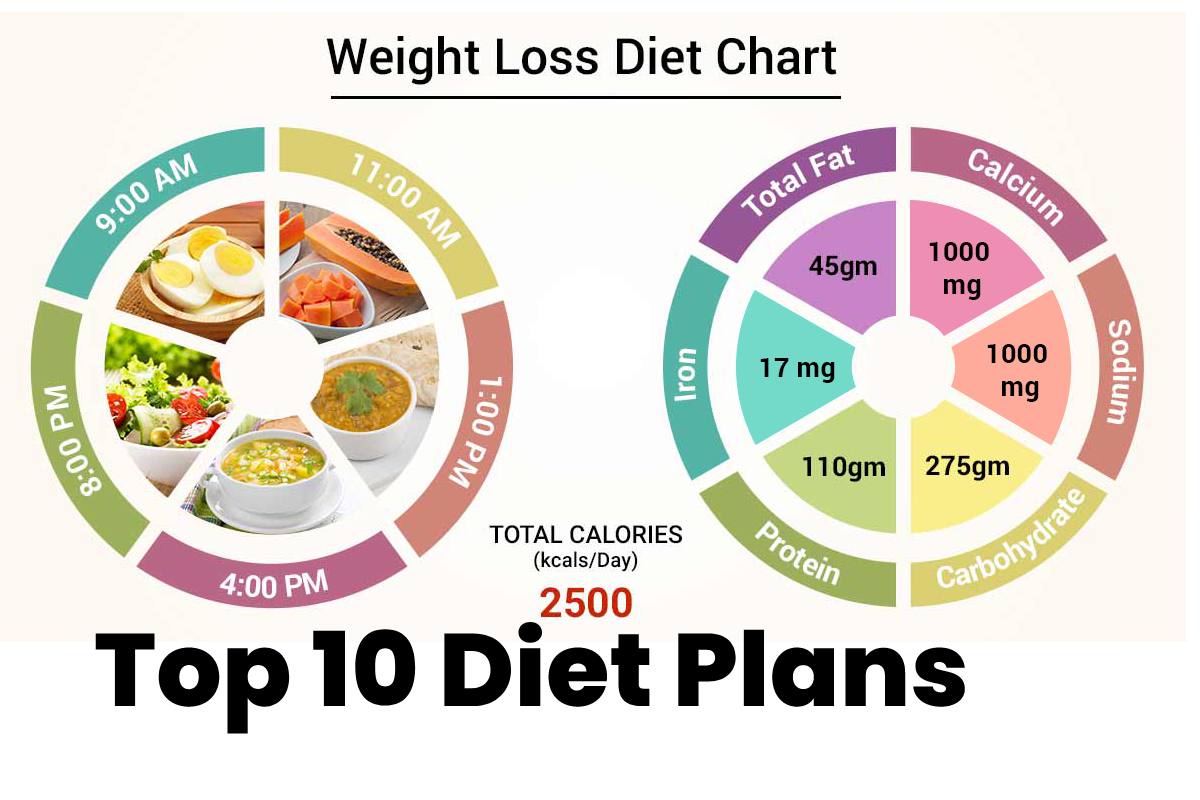Table of Contents
Here are the Top 10 Diet Plans
With so many different weight reduction designs, it’s difficult to pick one, particularly when there’s nobody size-fits-all eating regimen.
If you have any desire to get in shape and recuperate your wellbeing with that’s employer you, you’ve come to the ideal locations.
In this blog, we rank the main 10 get-healthy plans in view of the logical proof supporting their adequacy. We additionally investigate the upsides and downsides of each arrangement to assist you with concluding which choice is best for you.
What is the best Top 10 Diet Plans for you?
There is solid proof that a wide range of diets can assist individuals with getting more fit.
Nonetheless, a few eating regimens can cause more exceptional weight changes than others. Some eating regimen plans may likewise give more prominent upgrades in wellbeing pointers, for example, glucose control and coronary illness risk factors, than different weight control plans.
It is likewise essential to find an eating routine that you like and that you can follow. In the event that you see your eating routine as a drawn out sound way of life change, as opposed to a handy solution, you’re more likely to get in shape and keep it off.
We have positioned the most famous weight reduction plans for their viability in weight reduction and second for upgrades in wellbeing markers, in light of the strength of the proof accessible to date.
Each diet was esteemed on a size of 1 to 5 for its effect on weight reduction and wellbeing changes, with an all out score of 10. It is influential for note that any such scoring framework might infer some degree of subjectivity and, obviously, the specific outcomes might be in question.
We also describe the diets, along with their rewards and difficulties.
If you’re prepared to lose weight and keep it off, read our full review of the 10 best weight loss plans and find out which one is best for you.

Keto or Low Carb Diet Ketogenic Diet Basics
The keto diet diminishes starch consumption and takes into consideration higher measures of protein and fat.
Carbs are make in starches (bread, potatoes, pasta), desserts (treats, cakes), milk, and organic products, among different food sources.
On a ketogenic diet, you diminish starches to where the body quits involving glucose as its principal premise of energy and on second thought utilizes basically fat, either the fat you eat or the fat put away in your body. the body. This fat-consuming state is known as ketosis.
The keto diet underlines consuming satisfactory measures of protein (meat, fish, eggs, cheddar or tofu) to which fats, like spread or olive oil, are adds for flavor and satiety. Vegetables that develop over the ground are likewise remembered for most dinners. Nuts and once in a while limited quantities of berries are likewise incorporates.
What number of sugars could you at any point eat to get into ketosis? The sum fluctuates between individuals. In any case, in examinations, ketogenic or low-carb eats less carbs typically contain under 50 grams of all out carbs each day.
Weight loss Top 10 Diet Plans
In a few surveys of studies that contrasted low-carb counts calories with low-fat eating regimens and different weight control plans, low-carb slims down were viewed as similarly successful, and frequently more compelling, for weight reduction.
Furthermore, when information from these examinations are thought about exclusively, low-carb slims down frequently bring about the most sensational weight and fat misfortune, in any event, when individuals are permits to eat as numerous ketogenic food sources as the need might arise to feel full.
In one such review, overweight grown-ups on a ketogenic diet without calorie limitation lost 26 lbs and 5.8% muscle to fat ratio in 24 weeks, while those on a calorie-confined, low-fat eating regimen lost 14 lbs (6.5 kg). ) and 2.8% of muscle versus fat. .
Ongoing examinations have likewise found that ketogenic eats less lead to amazing weight reduction.
One reason ketogenic diets are so effective for weight loss is that they often suppress appetite, causing people to certainly eat less without deliberately restricting calories.
Top 10 Diet Plans Health benefits
Also, to weight reduction, low-carb sustenances frequently give metabolic medical advantages.
Of the three macronutrients (protein, carbs, and fats), carbs are the ones that raise glucose the most. At the point when individuals with type 2 diabetes shadow a low-carb diet, they frequently find significant enhancements in their glucose control and can decrease or stop their diabetes prescription.
Low-carb eats less frequently lower fatty oils and raise HDL cholesterol levels (changes remembered to be gainful) more than different weight control plans. They can likewise bring down degrees of little, thick LDL particles in the blood, the kind of LDL cholesterol that has the most grounded connection to cardiovascular failure risk. It tends to be extremely viable in bringing down pulse.
1.professionals
It is often more effective for weight loss than other diets.
Suppresses appetite, and leads to weight loss without intentional calorie restriction or starvation
Significantly improves the control of blood sugar and other metabolic indicators
2.Negatives
More restrictive than other diets, including a more moderate low-carb diet (see below) (see below)
It can initially cause a side effect known as the keto flu.
People who take diabetes or blood pressure medications need medical supervision
3.The Basics of a Low Carb Diet
A low-carb diet gives 50 to 130 grams of complete carbs each day, which is higher than a ketogenic or ultra low-carb diet yet considerably lower than the 200 to 300 grams of carbs consumed by the extraordinary larger part of individuals.
A low-carb diet incorporates all of the ketogenic diet food assortments (meat, eggs, ground vegetables, fats, and berries), as well as two or three other food assortments that are somewhat higher in carbs, like soil items, and perhaps in restricted measures of dull food sources, like potatoes.
4. Intermittent fasting
Discontinuous fasting is going for significant stretches of time without eating. They incorporate time-confined eating (skirting at least two feasts per day) and alternatings-day fasting (eating typically one day and fasting or eating not many calories the following day).
Unlike other weight loss strategies, irregular fasting determines when you eat, not what you consume.
5. Mediterranean diet
The Mediterranean eating routine is an approach to eating that depends on the customary cookery of individuals who live in the Mediterranean republics, which incorporate Spain, Italy, and Greece.
Many individuals feel that the Mediterranean eating routine is solid in light of the fact that its most well known variant incorporates a great deal of root vegetables, natural things, entire grains, fish, vegetables, nuts, and olive oil, with unobtrusive measures of meat, eggs, dairy, and liquor.
6. Paleo diet
The Paleolithic eating regimen, otherwise called the agrarian eating routine, the cavern tenant eating regimen, and the Stone Age diet, incorporates just food varieties that our precursors (who lived roughly 10,000 to quite a while in the past) would have devoured. a million years) were consumed.
On a paleo diet, you ought to stay away from handled food sources, refined flour, and sugar, however entire grains, dairy, and vegetables too. Food varieties that can be eaten incorporate meat, fish, organic products, vegetables, tubers (potatoes and yams), nuts and seeds.
The advanced age way of life acquired acclaim and ubiquity through the works of activity physiologist Lauren Corden in his 2002 top of the line book, The Paleo Diet.
This way of eating focuses on returning to natural foods to improve and prevent metabolic diseases.
7. vegetarian diet
In a vegan diet, all creature items are not on the table. This implies dodging eggs, meat, fish, dairy items, and gelatin (which comes from creature bones and skins). Plant food sources incorporate vegetables, grains, nuts, seeds, vegetables, and natural products.
Both veggie lover and vegetarian abstains from food have foster exceptionally broad lately. In spite of the fact that individuals at times utilize these footings conversely, they mean various things. Dissimilar to plant-based eats less, plant-based diets might incorporate modest quantities of creature items.
8. Board diet
Dietary Ways to deal with Stop Hypertension (Run) is an eating routine intended to bring down circulatory strain.
It centers around negligibly handled food sources that are high in potassium and other natural substances, like organic products, vegetables, whole grains, lean protein, and low-fat dairy. The Scramble diet limits sugar and soaked fat, and most adaptations confine sodium.
9. FWW (formerly Weight Watchers)
FWW, known as Weight Watchers until 2018, is an eating regimen program that doles out direct qualities toward food varieties, called Shrewd Focuses, in view of their calorie and sustenance content.
Albeit dietary calories structure the premise of the set worth, immersed fats and sugar increment its worth, while protein diminishes it.
Various organic products, vegetables, vegetables, and lean proteins are designate a zero worth, to urge individuals to eat however much these food varieties as could be expected. Obligated on the eating plan an individual picks, they can gobble different food sources and gain up to 100, 200 or 300 thoughts each day.
10. Zone Diet
The Zone Diet was shape by Dr. Barry Singes, who distribute the smash hit book Getting in the Zone Diet in 1995.
It includes eating a specific level of the macronutrient (40% carbs, 30% protein, 30% fat) at every feast.
The eating regimen likewise accentuates picking low-glycemic carbs (vegetables, yams, apples), lean proteins (chicken bosoms, fish, egg whites), and un-soaked fats (olive oil, nuts).
To arrive at a 40/30/30 proportion of macronutrients, individuals eat zone “impedes” that contain 7 grams of protein, 9 grams of sugars, other than 1.5 grams of fat. Individuals who follow the Zone Diet are relegate a day to day proportion of blocks in view of their weight and body organization.
Conclusion Top 10 Diet Plans
so many different weight reduction designs, it’s difficult to pick one, particularly when there’s nobody size-fits-all eating routine.
Assuming you really want to shed pounds and work on your wellbeing with that’s employer you, you’ve come to the ideal locations.
In this blog, we rank the main 10 health improvement plans in view of the logical proof supporting their adequacy. We additionally investigate the upsides and downsides of each arrangement to assist you with concluding which choice is best for you.

